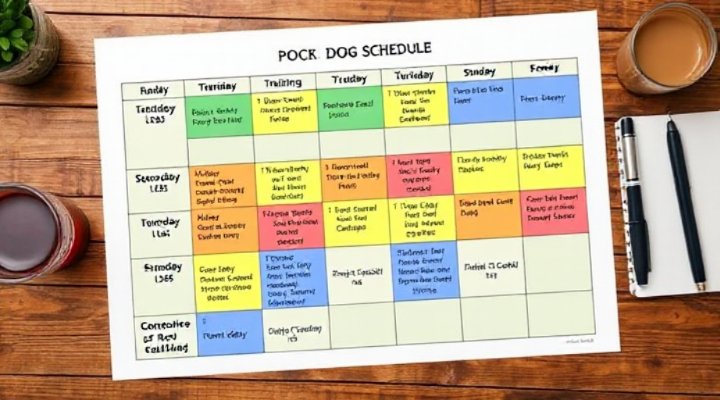Creating an effective dog training schedule is crucial for developing good behavior in your canine companion. Whether you’re working with a new puppy or an older dog, a structured approach yields the best results. Let’s explore how to build a scientific training plan that fits your lifestyle and your dog’s needs.

Understanding the Importance of a Dog Training Schedule
A proper dog training schedule provides consistency, which is key to successful learning. Dogs thrive on routine, and knowing what to expect helps them feel secure while making training more effective. According to the American Veterinary Medical Association, structured training significantly improves dog behavior and owner satisfaction.
For puppies, our puppy training schedule guide offers age-specific recommendations. Meanwhile, adult dogs benefit from our scientifically proven training methods.

Step 1: Assess Your Dog’s Current Level
Before creating your dog’s training schedule, evaluate their current skills and behavior. This helps you set realistic goals and track progress effectively. Consider factors like:
- Basic obedience commands known
- Behavioral issues needing correction
- Your dog’s age and energy levels
- Your available time for training
Our dog commands for behavior correction article can help identify areas needing work.

Step 2: Determine Training Frequency
For optimal results, most dogs benefit from:
- 2-3 short sessions daily (5-15 minutes each)
- Consistent training days each week
- Gradual increase in difficulty
Remember, quality matters more than quantity. As the American Kennel Club notes, short, frequent sessions prevent frustration and maintain your dog’s focus.
Puppy Training Frequency
Puppies have shorter attention spans. Our age-specific puppy schedule recommends:
- 8-12 weeks: 5-minute sessions, 3-5 times daily
- 3-6 months: 10-minute sessions, 3 times daily
- 6+ months: 15-minute sessions, 2-3 times daily

Step 3: Create a Balanced Training Plan
A comprehensive dog training schedule should include:
| Training Type | Frequency | Duration |
|---|---|---|
| Basic obedience | Daily | 5-10 minutes |
| Behavior correction | 3-5 times weekly | 10-15 minutes |
| Socialization | 2-3 times weekly | Varies |
| Mental stimulation | Daily | 10-15 minutes |
For specific behavior issues, our separation anxiety training guide offers specialized schedules.

Step 4: Implement and Track Progress
Once you’ve created your dog training schedule, consistency is crucial. Keep a training log to:
- Record daily sessions
- Note improvements
- Identify challenging areas
- Adjust the schedule as needed
Remember, every dog learns at their own pace. Celebrate small victories and maintain patience throughout the process.
Final Thoughts on Dog Training Schedules
A well-planned dog training schedule transforms the training process from chaotic to controlled. By following these steps and maintaining consistency, you’ll build a stronger bond with your dog while achieving lasting behavioral results.
For more training resources, explore our affordable training solutions and scientifically proven methods.
Related Keywords: puppy training schedule, dog obedience training, canine behavior training, structured dog training, effective dog training methods

